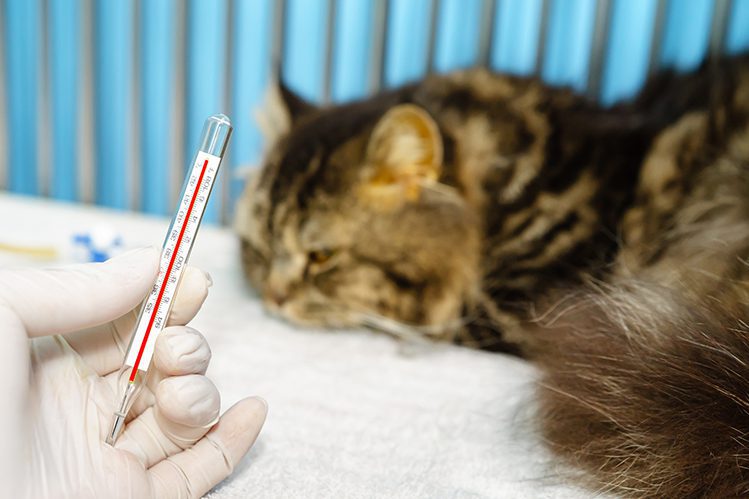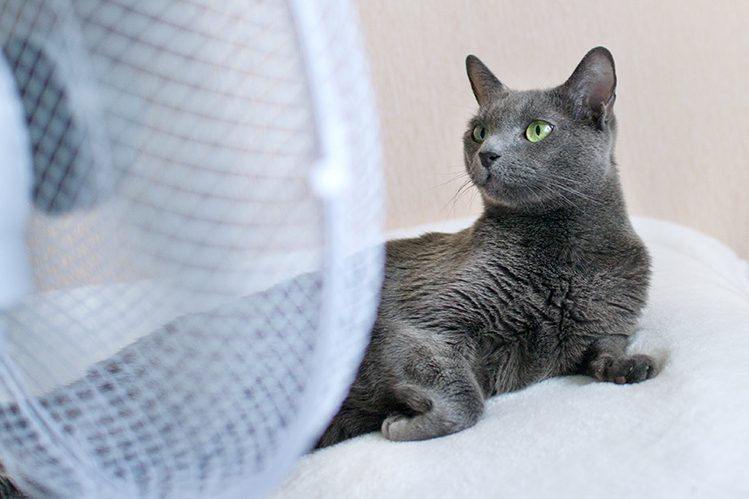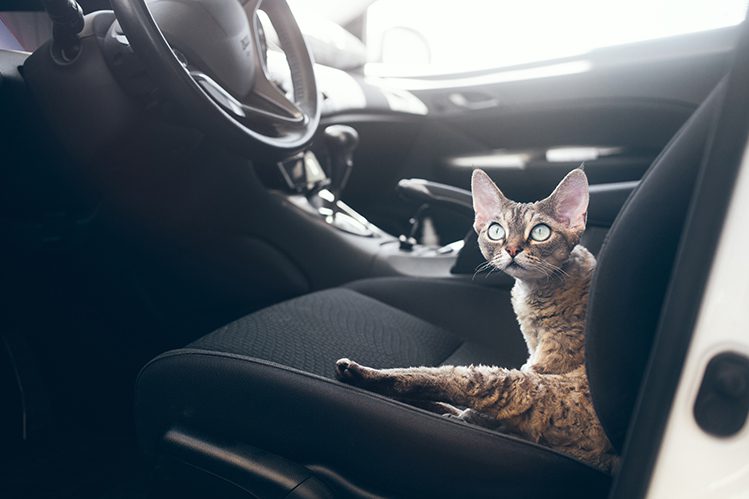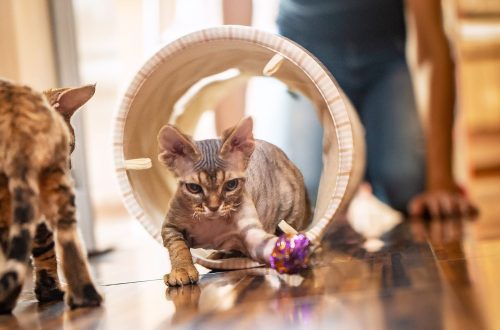
Heatstroke in a cat
Can a cat overheat in the sun or in a stuffy room? How to understand that a cat is hot? Why is heat stroke dangerous and how to protect your pet from it? The veterinarian says.
What is overheating and heat stroke? Are these different concepts or synonyms? Let’s figure it out.
Overheating is a painful condition when, due to the high ambient temperature in the body, the heat balance is disturbed and the body temperature rises. Heat stroke is a critical point of overheating, when the body can no longer cope with heat loss. It is accompanied by a high heartbeat, rapid breathing, intense thirst. If no action is taken, the first symptoms are followed by loss of consciousness and convulsions.
Overheating can occur when exposed to direct sunlight, being in a stuffy room, or strenuous exercise in high humidity or ambient temperature.
A cat of any breed, of any age, can suffer from heat stroke (including sunstroke). To do this, it is enough to spend only five minutes in the scorching sun or stay for two minutes in a closed car.
Cats with flat muzzles – brachycephalic, overweight and other conditions that put an additional burden on the body – are especially often affected by heatstroke.

Restless behavior or, on the contrary, complete apathy
The cat is gasping for air
Increased body temperature
Rapid, heavy breathing
Cardiopalmus
Wide eyes
Increased salivation
Dryness and pallor of mucous membranes
Nausea
Loss of consciousness
Convulsions
In the hot season or when the room is stuffy, one symptom is enough to sound the alarm. Symptoms develop very quickly, and the consequences can be the most serious. An increase in body temperature to 43 C and above can be fatal.
If you notice at least one symptom from the above, be sure to contact your veterinarian as soon as possible and give your pet first aid.
Your task is to immediately contact the veterinarian and get the cat to the clinic as soon as possible. But first you need to give the cat first aid.
First, move it to a shady place and lay it on a cool surface.
Provide fresh air. You can turn on the fan or air conditioner in the room
Wet your lips with cool water. To restore strength and cool the body, the cat needs to drink. You can put a bowl of cool water nearby. If your pet is unable to drink on its own, carefully give it water drop by drop using a disposable plastic syringe without a needle. To do this, move the gum, insert the thin tip of the syringe between the teeth and gently (in drops, not a stream) pour in water. Make sure your pet doesn’t choke. This method of replenishing fluid in the body is practiced only if the animal is conscious
Lightly dampen your cat’s belly, armpits, and coat with cool water. You can not dip the cat in cold water, otherwise you will provoke a vasospasm and make it difficult to normalize body temperature. And that can lead to heart failure.
If possible, briefly apply ice wrapped in a cloth to the paw pads, groin, back, head. Keep an eye on the condition of the skin so that there is no hypothermia. Apply cold compresses to your armpits and inner thighs.
Control body temperature: it should decrease gradually.
It is strictly forbidden: to dip a cat in cold water, to give an antipyretic, to do nothing! Heatstroke won’t go away on its own!
After giving your pet first aid, take him to a veterinarian or call him at home. Even if the cat is already feeling well, it is better to have her condition checked by a professional. The consequences of overheating can develop within 5 days.

Cats are very smart, neat and careful animals. By nature, they know very well how to avoid overheating. Please note that the cat never runs or plays in extreme heat, always finds the coolest place in a stuffy room, and if it basks on the windowsill in the sun, it always goes into the shade from time to time to stabilize the temperature.
Overheating troubles begin when a person intervenes in the process. A huge number of cases are related to the fact that the owner left the pet alone in the car. A few seconds in the sun is enough for the car to warm up and turn into a kind of sauna for the cat, where she will have nothing to breathe. Another reason for overheating is walking with a cat under the sun. Owners can lead pets on a harness for a long time, despite their resistance. Of course, their intentions are good, but because of the lack of knowledge, the pet suffers.
Cutting or shaving a cat is another common mistake. Wool does not provoke overheating, but on the contrary: it protects against it and maintains thermoregulation. If it is removed, the cat will only get worse. In addition to the heat, she can get sunburn, skin and coat problems. Instead of shaving, it is enough to carefully comb out the cat or slightly shorten the thick fur.
To keep your cat from overheating, follow these simple rules:
Do not walk the cat on hot days, do not let it be in the open sun
In the room where the cat is, there should always be cool shady places.
Ventilate the room more
Don’t force your cat to move a lot when it’s hot or stuffy.
Don’t overfeed your cat
A cat should always have free access to clean drinking water. If you go on a trip, do not forget to take water for the cat and a bowl with you on the road. There are special drinkers that can be installed directly on the door of the shipping container.
Do not cut or shave your cat. Contrary to the stereotype, a short coat or its complete absence will not help protect a cat from the heat, but vice versa
Do not use collars or other accessories that may make breathing difficult
Don’t leave your cat in the car, even for one minute.

Even at 20 C, the temperature inside the car can rise to 46! The pet is trapped in a trap without fresh air and suffocates. Thus, due to the fault of irresponsible owners, many cats and dogs were seriously injured. Under the law of the United States and Great Britain, a passer-by has the right to break the glass of a car in order to save a pet locked in it.
By following these simple rules, you will protect your pet from danger. We wish you a summer without incident!





